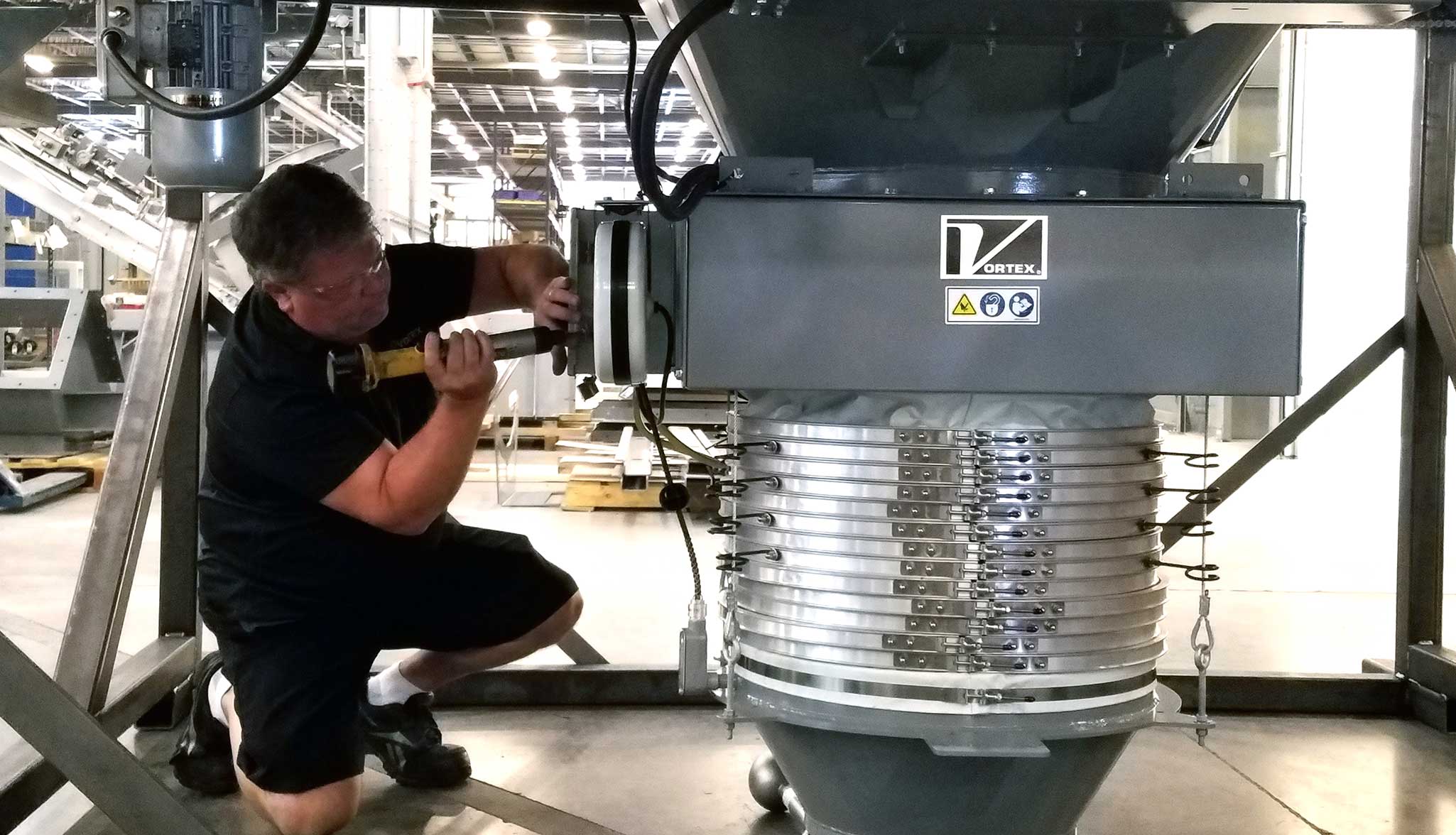
Client:
Quantity:
Size:
Application:
On October 6, 2017, hundreds of manufacturers throughout the United States will participate in Manufacturing Day™ (MFG Day) to showcase modern manufacturing technologies and inspire the next generation of skilled workers.
Since its founding in Salina, Kansas, USA, in 1977, Vortex has evolved its manufacturing processes significantly to become the industry leader it is today.
The Evolution of Vortex's Manufacturing Processes

1970s & 80s – When Vortex began production, hundreds of parts were needed for valve assembly – many of which were outsourced from Kasa Fab (a subsidiary of Kasa Companies) and another local machine shop. Through this era and well into the 1990s, it was common for manufacturers to outsource production because of the significant capital investment necessary to bring fabrication and machining technologies in-house.
1990s – Vortex gradually began to fabricate its own sub-components for production, in order to decrease costs for outsourcing. Using auto-CAD computing technologies, Vortex was able to produce digitized valve drawings for reference during the manufacturing process. The drawings were assisted by several manufacturing packets, each highlighting the jobs and responsibilities of each manufacturing department for each sales order.
“During that time, manufacturing departments were not only in charge of their specific job responsibilities, such as welding or valve assembly, but were also responsible for producing the materials used at their work stations,” shared Monty Leach, vice president of manufacturing at Vortex.
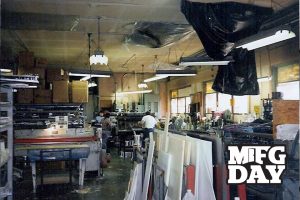
“At any given time, you could find dozens of manufacturing packets floating around the shop floor with basic information on how to build the valve at-hand,” said Cory Wellbrock, manufacturing manager at Vortex. “Those packets were passed from department-to-department and were so thick, an industrial stapler was needed to hold them all together.”
While the manufacturing packets were thorough, their usefulness was often limited. They contained mainly valve drawings, but lacked bill of materials and overall instruction. This left employees scrambling, constantly looking for the parts needed to build each valve that came through. Employees were also tasked with making calculations for hand-cutting bolt holes and measuring by-hand where raw metals must be cut or bent using a manual press brake. All-in-all, this production method significantly slowed lead times as employees built through step-by-step interpretation of valve drawings.
“At that time, it was not uncommon for our shop floor employees to memorize the parts and instructions needed to build each valve model,” said Chris Flener, supervisor of assembly at Vortex. “It was one of the few techniques we could utilize to produce more efficiently – simply building from memory, rather than following tedious, step-by-step drawings.”
1997 – Vortex invests in its first CNC Vertical Milling Center. This technology was the milestone of Vortex’s transition into the Machine Shop Era that it enjoys today. With the CNC Vertical Milling Center, Vortex began using technology to cut its own parts for use in production. That technology has since been upgraded and many new technologies are being utilized, as Vortex is now at the leading edge of digital machining, milling, and tooling capabilities.
“As many startup manufacturers begin, Vortex worked as minimalists up until this point in our company’s history,” shared Leach. “Prior to 1997, we were still operating using limited resources – many of our materials used in production were still being outsourced, and we were working with very simple tools. This new technology was exciting for Vortex because it was the pivotal moment for our company to become more self-reliant.”
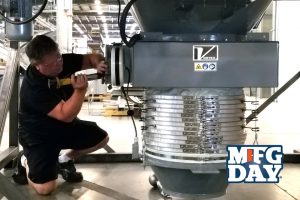
From 2000-2006, Vortex turned its traditional manufacturing process on its head and underwent a complete transformation in practices.
2000 – Vortex invests in new, automated machinery to begin cutting polymer sheet in-house.
2002 – Vortex began producing their own pneumatic air cylinders. Now, Vortex has direct access to pneumatic air cylinder supply, and is able to collect additional margins by producing in-house.
“Prior to building our own pneumatic air cylinders, Vortex was outsourcing air cylinders from a company in New York,” said Wellbrock. “Because their manufacturing lead times lagged and additional time was necessary to ship cylinders from New York to Kansas, Vortex would have valves waiting to be shipped for several weeks. This process was inefficient and frustrating to our customers, so we pursued this opportunity for growth.”
2004 – Vortex manufacturing operations evolved exponentially:
During that year, Vortex purchased machinery to begin tooling and cutting its own raw materials for production, instead of outsourcing fabrication.
Vortex also invested in the program SOLIDWORKS, an upgraded AutoCAD® platform that allows 3-D design and automatically generates calculations for programming the manufacturing machines.
“With AutoCAD, our manufacturing accuracy and repeatability was within 1/8 of an inch tolerance,” said Chris Perkins, manager of CNC programming at Vortex. “Now, with SOLIDWORKS, our manufacturing accuracy and repeatability has significantly improved, with tolerances now within 1/1,000s of an inch.”
To support its rapidly growing manufacturing capabilities, Vortex began utilizing an Enterprise Resource Planning (ERP) system. This technology has created cohesion between Vortex’s many departments – from sales to operations, manufacturing shop, and many more – and allowed information sharing throughout the company. With immediate access to consistent information, Vortex is now able to manufacture more efficiently through a more informed and unified workforce.
2006 – Vortex further enhances its digitized manufacturing methods by purchasing its first laser cutting machine. The machine is completely programmable, allowing it to make many metal cuts of differing complexities.
“This new technology created a significant opportunity for company growth,” explained Bobby Sexton, manager of process control at Vortex. “With new laser cutting technologies, Vortex was able to enhance its design capabilities, which allowed us to offer more product models and product lines.”
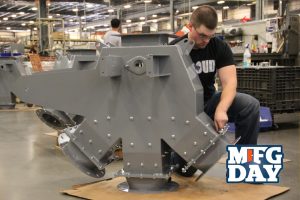
2008 – Collectively, these new, innovative technologies afforded Vortex more control and predictability over the manufacturing process. In response, Vortex began forward scheduling and order planning to enhance production efficiency. In essence, forward scheduling is the allocation of plant resources to manufacture products in an organized and more pre-determined way. With forward scheduling, Vortex improved lead times and met shipping deadlines more effectively, which made for a more organized shop floor and enhanced customer satisfaction.
Today – Nearly all parts used in production are digitally manufactured in-house at Vortex’s Salina headquarters. A company once heavily dependent on outsourcing, Vortex has now transitioned to an almost entirely self-sustaining manufacturing process.
Vortex Supports the Local Manufacturing Community
For 40 years, Vortex has worked diligently to create awareness not only for its business, but also for the degree of manufacturing excellence that can be found in Central Kansas. In that time, several Vortex employees have served as instructors and advisers at Salina Tech, a local vocational college with a reputation for producing highly trained welders. More than 90 Salina Tech graduates have been employed at Vortex, with many more to follow.
“Vortex has always been acknowledged as a company of high quality craftsmanship,” said Leach. “We believe that our internal commitment to employee development and the training our employees receive at Salina Tech and many other colleges have been key in our ability to retain that expectation of excellence.”
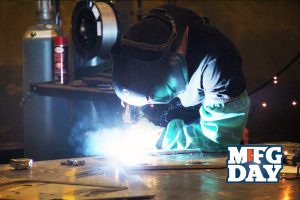
Among the many defining aspects of Vortex products and services is the high quality of its welding.
“Some of our customers believe the welding on our valves is done by robots,” said Wellbrock. “They are surprised to hear we do not own a single welding robot – it is all done manually by trained welders. That consistent craftsmanship, coupled with the experience and unique skillsets our employees bring to the table, is what makes Vortex such a special place.”
Some Things Never Change...

Ask any Vortex employee, “What do you attribute the company’s rapid growth and success to?” – and most will reply, “Our core values.” That’s because since the company’s conception, the Vortex core values of Respect, Integrity, Passion & Humility have never changed – there’s been no need to change them!
“That passion has always been here,” said Perkins. “Before the company grew to what it has become today, when we operated on a much smaller scale, it was not uncommon for guys working on the shop floor to assist in engineering. Even today, Vortex employees are willing to do whatever is necessary to give our customers the solutions they desire. Our employees stay because they have passion for what they do, and for what we do as a company.”
“Employees enjoy working at Vortex because they have a very powerful voice here,” said Flener. “Many of the changes that occur in our company are the result of an employee’s idea, and they enjoy making that kind of significant impact.”
“From the owners to the managers, supervisors and skilled workers, everyone at Vortex is invested in the success of the company and our colleagues,” explained Perkins.
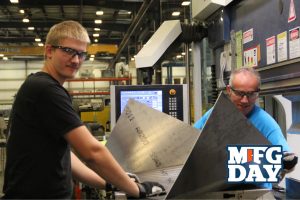
“Countless examples exist where the owners have placed greater emphasis on employee satisfaction than business decision making,” said Wellbrock. “They fully embrace their employees and feel a sense of obligation to keeping employees happy in the work that they do. That is what has led to this beautiful, state-of-the-art manufacturing facility, and what has allowed us to consistently hire people who embrace our company’s message.
“All in all, that investment in employee success, the Vortex Core Values, and the quality in craftsmanship that we expect of our products are what has allowed the company to thrive.”
About Manufacturing Day
Manufacturing Day aims to empower manufacturers, change public perceptions of manufacturing, introduce people to manufacturing careers, draw attention to the roles manufacturers play in their communities, and underscore the economic and social significance of manufacturing.
Since 2012, the number of Manufacturing Day events has grown by more than 1,000 percent, with more than 2,800 events now being hosted by manufacturers across the country. These events have impacted more than 595,340 event participants – including more than 267,600 students.
For more information about Manufacturing Day 2017, and to find or host an event, visit www.mfgday.com.
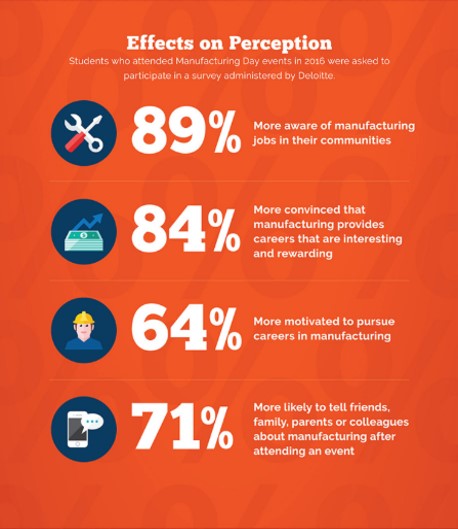
About Vortex
Vortex specializes in the design and manufacture of slide gates, diverter valves, iris diaphragms and loading spouts, for the transport and flow control of dry bulk materials in gravity flow, dense phase and dilute phase pneumatic conveying applications. Vortex’s technical focus is in the development of innovative technologies to improve solids process efficiency, ensure dust-free environments, and establish long-term reliability. Vortex’s design philosophy is to develop products that compensate for wear, require minimal spare parts, provide in-line maintenance, and maintain a longer service life than market alternatives.
Worldwide, more than 15,000 companies in 80 countries utilize Vortex technologies to handle thousands of dry bulk materials.
For more information, contact us.













